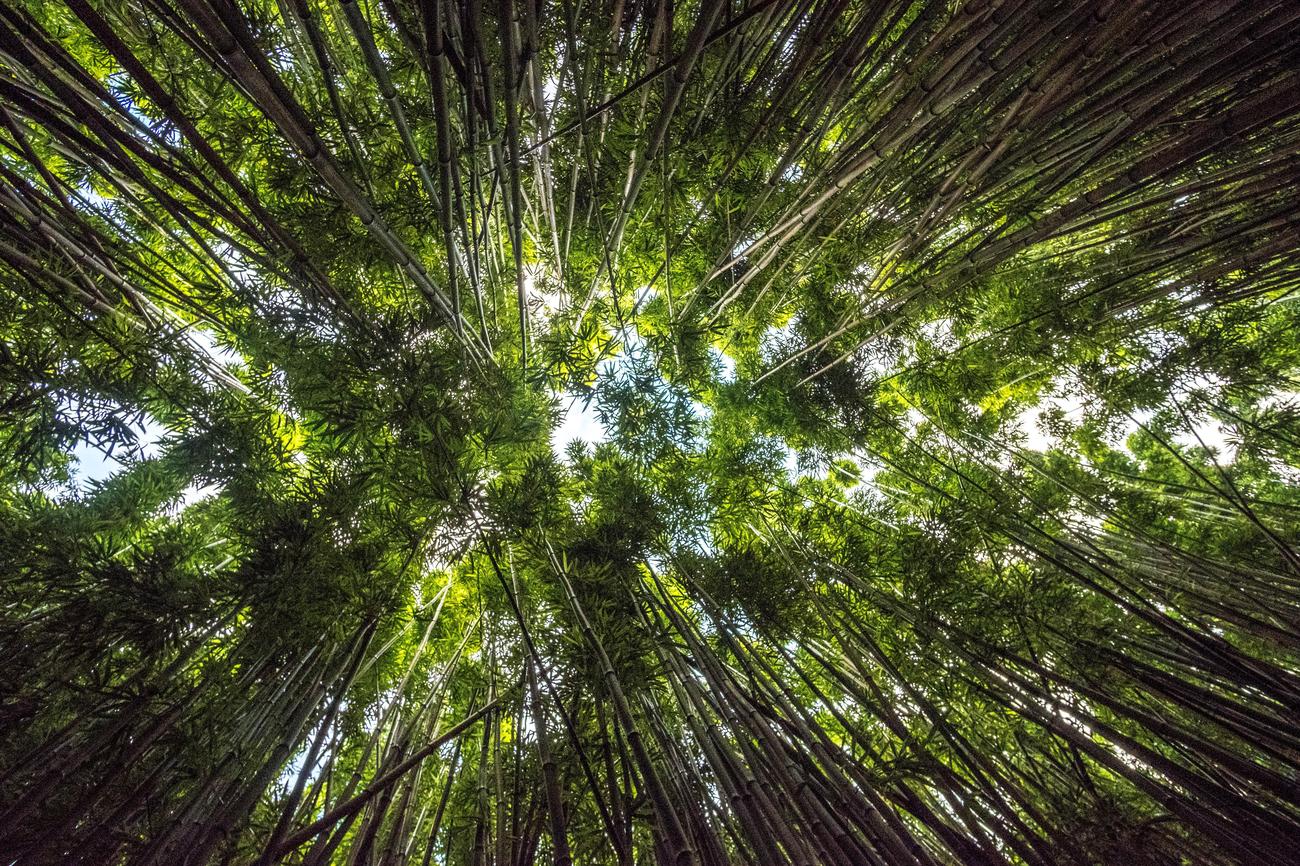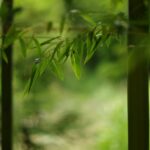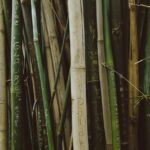Bamboo is the fastest-growing plant on Earth, known for its astonishing growth rate that surpasses even the most ambitious expectations. But beyond its rapid development lies a world of incredible wonders waiting to be unveiled. For centuries, bamboo has served as an alternative building material, weaving its way into the cultural fabric of diverse communities across the globe. As we delve into the realm of this magnificent plant, prepare to be amazed by the fun facts that reveal its versatility and eco-friendly properties. Join me on a journey through the captivating world of bamboo, where tradition meets sustainability, and nature showcases its ingenuity.
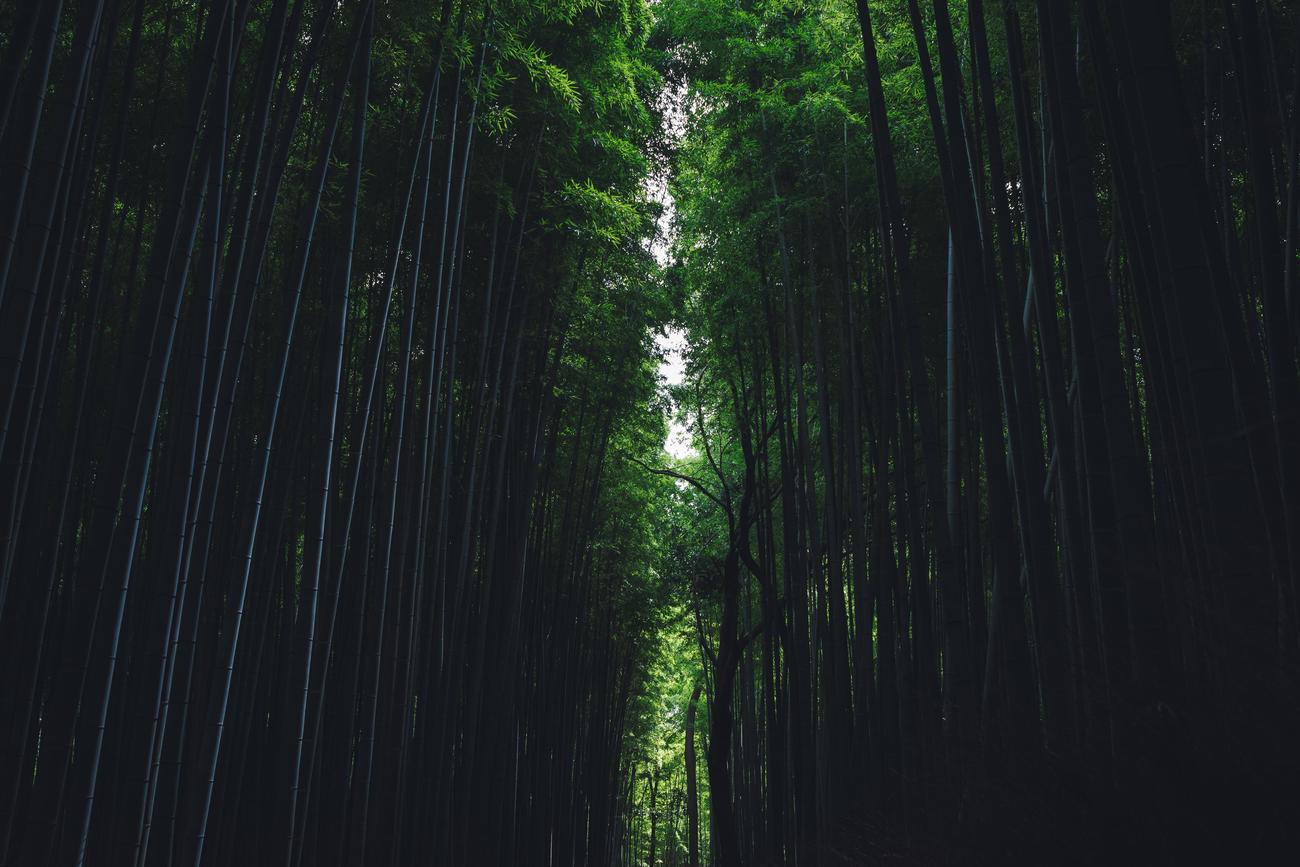
Fun Facts About Bamboo
Bamboo, the world’s fastest-growing plant, holds remarkable wonders that go beyond its graceful appearance. As a nature enthusiast and seasoned writer, I am excited to reveal the fascinating fun facts about bamboo, taking you on a journey into the astonishing versatility, eco-friendly properties, and cultural significance of this incredible plant.
1. The Speedy Growth Spurt
Imagine witnessing a plant grow right before your eyes! Bamboo has the incredible ability to sprout up to a staggering 91 centimeters (36 inches) in a single day. This rapid growth makes it one of nature’s greatest marvels, showcasing its determination and resilience in every inch it adds to its height. [fun facts about bamboo]
2. A World of Diversity
Step into the rich tapestry of bamboo and encounter over 1,400 diverse species spread across the globe. From towering giants to delicate varieties, bamboo offers a kaleidoscope of aesthetics and functions. Each species possesses distinctive traits and characteristics, creating a captivating realm for exploration. [fun facts about bamboo]
3. A Grass Among Trees
Contrary to popular belief, bamboo is not a tree but a remarkable species of grass. This revelation adds to the allure of this extraordinary plant, revolutionizing our understanding of what nature can produce. Embracing the world’s tallest grass as its title, bamboo stands tall with elegance and grace. [fun facts about bamboo]
4. Towering Heights
Prepare to be amazed by the magnificent height some bamboo species can attain. Rising above the canopy, these towering giants can stretch over 100 feet, commanding attention and reminding us of nature’s architectural prowess. [fun facts about bamboo]
5. Oxygen Oasis
Breathing life into our planet, bamboo plays a pivotal role in sustaining the atmosphere. This humble grass releases a whopping 35% more oxygen than other trees, acting as a natural oxygen generator. Additionally, bamboo diligently absorbs carbon dioxide, making it a champion in the fight against climate change by sequestering approximately 17 tons of carbon dioxide per acre. Such eco-friendliness knows no bounds in the realm of bamboo. [fun facts about bamboo]
6. Nature’s Self-Sufficient Marvel
Imagine a plant that doesn’t rely on fertilizers yet thrives with unparalleled vigor. Bamboo is precisely that marvel. Its self-mulching characteristic is a masterful strategy, as it diligently drops its leaves, creating a natural mulch that nourishes the soil and sustains its continuous growth. This sustainable approach to self-care showcases bamboo’s inherent wisdom. [fun facts about bamboo]
7. Surviving Dry Spells
In the harshest of desert landscapes, bamboo stands as a beacon of resilience. With its exceptional drought tolerance, this adaptable grass tackles arid conditions with ease, defying the odds and transforming barren landscapes into thriving ecosystems. [fun facts about bamboo]
8. Nature’s Steel
When it comes to strength, bamboo surpasses even the mightiest of metals. This supergrass flexes its high tensile strength, demonstrating its remarkable durability and resilience. It’s as if nature fashioned a steel-like substance from humble grass, proving that strength can emerge from the most unexpected sources. [fun facts about bamboo]
9. Antibacterial Warrior
Bamboo is not only strong but also harbors natural antibacterial properties. These incredible defenses make bamboo a reliable ally in maintaining hygiene, fighting against harmful bacteria that may threaten our well-being. [fun facts about bamboo]
10. Nature’s Water Engineer
Bamboo possesses an exceptional talent for water management. Acting as a natural filter, it slows down the flow of water, making it an invaluable tool in stabilizing soil, preventing erosion, and protecting fragile ecosystems. Its ability to manipulate water demonstrates bamboo’s capacity to engineer nature in its favor. [fun facts about bamboo]
11. Fire’s Nemesis
In the face of fire’s destructive force, bamboo stands tall as a natural shield. Built with a high concentration of silicate acid, bamboo possesses remarkable resistance to fire, making it nearly fireproof. This inherent quality ensures the preservation of bamboo forests and protects the ecosystems they harbor. [fun facts about bamboo]
12. A Green Carbon Sponge
Bamboo emerges as a true savior in the battle against climate change. With its fast growth rate, this magnificent grass sequesters a significant amount of carbon, making it an exceptional resource for reducing greenhouse gas emissions. It transforms itself into a green carbon sponge, soaking up pollution and ensuring a greener future for our planet. [fun facts about bamboo]
13. Beneath the Surface
Just as bamboo’s beauty captivates our eyes, its intricate root network enchants below the surface. With shallow, dense roots resembling those of grass, bamboo establishes a robust foundation. This network holds the soil in place, preventing erosion and safeguarding landscapes against nature’s forces. [fun facts about bamboo]
14. Food and Shelter Provider
Bamboo stands as a generous provider in nature’s grand symphony. Its presence provides essential habitat and nourishment for a wide range of animal species. From birds to insects, from mammals to reptiles, bamboo creates a vibrant haven where diverse forms of life flourish. It’s a simple yet profound reminder that interconnectedness and harmony lie nestled within nature’s embrace. [fun facts about bamboo]
15. Panda’s Gastronomic Delight
For the beloved pandas, bamboo holds a place of utmost importance. These adorable creatures rely heavily on bamboo as their primary food source, savoring its succulent leaves with abundant joy. The bamboo-panda connection embodies nature’s delicate balance, underscoring the vital role of bamboo in preserving biodiversity. [fun facts about bamboo]
16. Nature’s Healing Touch
Bamboo’s wonders extend beyond sustenance and shelter. In traditional medicine practices, bamboo is cherished for its remarkable healing properties. Its extracts have been used to treat various ailments due to their anti-inflammatory, analgesic, and antimicrobial qualities. Bamboo proves that nature not only provides but heals. [fun facts about bamboo]
17. Sustainable Building Revolution
As the world awakens to the pressing need for sustainable alternatives, bamboo emerges as a powerful ally in the realm of construction. Sustainable building practices embrace bamboo as an eco-friendly substitute for traditional materials. Its versatility as a renewable resource makes it an attractive option, demonstrating that we can build a greener future from the ground up. [fun facts about bamboo]
18. A Symbol of Resilience
Through the ages, bamboo has earned a place of honor in cultural symbols. Seen as a representation of strength, adaptability, and resilience, bamboo weaves its way into mythologies and folklore across various cultures. It stands as a fragrant reminder that even in the face of adversity, resilience can sprout and flourish. [fun facts about bamboo]
19. Endless Possibilities
From the floors beneath our feet to the clothes on our backs, bamboo extends its versatility beyond imagination. This enchanting grass embraces various industries, weaving itself into the fabric of our everyday lives. From utensils to musical instruments, from furniture to paper, bamboo’s endless applications showcase its incredible adaptability. [fun facts about bamboo]
20. Fungal Warrior
Nature equipped bamboo with a remarkable defense mechanism that repels pests and fungi with ease. Its natural anti-fungal properties make it resistant to deterioration, ensuring its longevity and durability in various applications. Bamboo’s fortitude echoes nature’s ingenuity, crafting a material that can withstand the tests of time. [fun facts about bamboo]
21. A Lifeline for Reforestation
In the face of deforestation, bamboo emerges as a lifeline. Its fast growth rate and robust root system make it an exceptional resource for reforestation efforts and soil conservation. Bamboo’s determination to reclaim lost landscapes reminds us that restoration and regeneration can sprout from the tiniest of seeds. [fun facts about bamboo]
22. Embodiment of Sustainability
In an era of environmental consciousness, bamboo stands tall as a symbol of sustainability. Its renewable nature, accompanied by its myriad of eco-friendly properties, positions it as a beacon of hope in our pursuit of a greener, more sustainable world. Bamboo illuminates the path towards a harmonious coexistence between humanity and nature. [fun facts about bamboo]
23. A Sustainable Alternative
From every perspective, bamboo emerges as a sustainable alternative to conventional materials and resources. Its rapid growth, low environmental impact, and regenerative qualities make it a champion in the fight against resource depletion and environmental degradation. Embracing bamboo signifies our commitment to a future rooted in sustainability. [fun facts about bamboo]
As we unveil the astonishing wonders of bamboo, we are reminded of the marvels that lie hidden beneath the surface of nature’s landscape. Bamboo’s versatility, eco-friendly properties, and cultural significance paint a vivid picture of a resource that transcends its humble appearance to embrace the essence of sustainability and resilience. Let us embrace bamboo’s incredible wonders and savor the endless possibilities they hold.
Fun Facts About Bamboo
Did you know that bamboo is not actually a tree, but a type of grass? It’s true! Bamboo belongs to the grass family and can grow up to incredible heights. In fact, some bamboo species can reach a staggering height of over 100 feet! If you’re curious to learn more about this fascinating plant, click on this link: Is Bamboo A Tree. Discover interesting facts about bamboo and why it is often mistaken for a tree.
Curious about the unique characteristics of bamboo? Find out more about its properties and what makes it so special by clicking here: Bamboo Characteristics. From its remarkable strength to its flexibility, bamboo possesses a variety of unique attributes that make it a favorite among architects and designers worldwide.
Are you ready for some mind-blowing facts about bamboo? Prepare to be amazed! Click on the following link to uncover 10 incredible facts about this remarkable plant: 10 Amazing Facts About Bamboo. From its rapid growth rate to its ability to absorb carbon dioxide, bamboo truly deserves its reputation as a sustainable wonder.
Do you ever wonder whether bamboo is a tree or grass? The answer might surprise you! To learn more about the classification of bamboo and why it is considered a grass, click on this link: Is Bamboo A Tree Or Grass. Discover the scientific reasons behind bamboo’s categorization and why it is more similar to your lawn than to a towering oak.
Are you interested in learning fun facts about bamboo fabric? Bamboo goes beyond its role as a construction material or landscaping plant and extends into the realm of clothing and textiles. Find out intriguing details about bamboo fabric by clicking here: Fun Facts About Bamboo Fabric. Explore the unique characteristics of bamboo fabric and why it is gaining popularity in the fashion industry.
Have you ever wondered how fast bamboo can actually grow? Prepare to be astonished! Click on the following link to learn about the impressive growth rate of bamboo: How Fast Does Bamboo Grow. Discover why bamboo holds the world record for being one of the fastest-growing plants on Earth.
Embark on an exciting journey into the world of bamboo by exploring these intriguing links. Each one will transport you to a realm where bamboo reveals its secrets and captivates with its awe-inspiring qualities.
Bamboo is the Fastest Growing Plant
Bamboo truly deserves the title of the fastest growing plant on Earth. It’s like the sprinter of the botanical world, racing ahead with boundless energy and unrivaled speed. In just one day, some species of bamboo can shoot up an astonishing 91 centimeters (or 36 inches)! Can you believe that? It’s like the plant equivalent of a growth spurt on steroids.
With over 1,400 different species of bamboo found across the globe, each one seems to have its own unique pace and rhythm. Imagine a bustling crowd where everyone is moving at their own pace, creating a symphony of growth. Bamboo, in all its diversity, showcases the splendid variety and adaptability nature has to offer.
Now, here’s a surprising twist: despite its height and grandeur, bamboo is not a tree. It’s actually a type of grass. Yes, you heard that right. This powerhouse of growth and strength belongs to the same family as the grass you might find in your backyard. But don’t let its humble stature fool you; bamboo can rise to phenomenal heights, some species even reaching over 100 feet tall. It’s a testament to the incredible stamina and resilience hidden within this fascinating plant.
But how does bamboo achieve such astonishing growth rates? Well, it’s a bit like a botanical Usain Bolt. It sprints through the growth process, putting its counterparts to shame. Some bamboo species can grow at an incredible rate of approximately 4 centimeters per hour. That’s faster than the speed at which your hair grows! It’s almost as if bamboo has mastered the art of accelerated growth, making it a force to be reckoned with in the plant kingdom.
But wait, there’s more. Bamboo doesn’t just win the race in terms of speed; it also triumphs in other aspects. When it comes to releasing oxygen, bamboo outshines all other trees, releasing a staggering amount into the atmosphere. It’s like a green factory, working around the clock to produce fresh oxygen for us to breathe. And, as if that weren’t enough, bamboo also absorbs carbon dioxide at an impressive rate of 17 tons per hectare. It’s like nature’s superhero, fighting climate change one carbon molecule at a time.
Speaking of superheroes, did you know that bamboo is stronger than steel? Yes, you heard me right. This seemingly delicate plant possesses a strength that rivals one of the strongest and most durable materials on Earth. It’s like a hidden fortress, quietly guarding its surroundings with unwavering might.
Bamboo also boasts some impressive health benefits. Thanks to its natural antibacterial properties, bamboo keeps harmful bacteria at bay. It’s like a shield of protection, keeping our living spaces not only stylish but also clean and hygienic. Who would have thought that a humble grass could offer such incredible health perks?
Another remarkable quality of bamboo lies in its ability to filter and slow down the flow of water. It’s like a wise old sage, guiding and nurturing the life force of rivers and streams. Bamboo helps prevent erosion and acts as a natural water management system. It knows how to hold onto what’s important and let go of what’s not, a true master of balance and harmony.
Now, let’s talk about fire. Usually, when we think of fire and plants, we imagine devastation and destruction. But bamboo refuses to conform to such expectations. It proudly stands as an exception, possessing a virtually fireproof nature. It’s like a guardian angel, shielding ecosystems from the wrath of fire and preserving the delicate balance of nature.
But here’s where the magic truly happens. Bamboo is not just a one-trick pony. It’s a sustainable resource and a renewable alternative to wood. Its eco-friendly qualities make it a prime candidate for various industries, from furniture to clothing and even building materials. It’s like the Swiss Army knife of plants, offering endless possibilities and sustainable solutions.
As if that weren’t enough, bamboo holds cultural significance in many Asian countries. It is woven into the fabric of their traditions, used in rituals and ceremonies, and celebrated for its resilience and adaptability. It’s like a symbol of unity and strength, reminding us of the treasures that lie within nature’s embrace.
In conclusion, bamboo is not just a plant; it’s a living wonder. Its incredible growth, strength, and eco-friendly properties make it an extraordinary force of nature. From its lightning-fast growth rate to its oxygen-releasing superpowers, bamboo continues to amaze and inspire. So next time you see a bamboo grove, take a moment to appreciate the astonishing wonders that lie within the world’s fastest-growing plant.
“Bamboo, the sprinter of the botanical world, dashes ahead with extraordinary haste, reaching heights that put many other plants to shame.”
Bamboo has been used as an alternative building material for centuries
Bamboo, the world’s fastest-growing plant, holds secrets that have fascinated humans for centuries. Its versatility and sustainable nature have made it a preferred choice for construction in various cultures around the world. From Asia to South America, bamboo has been utilized as an alternative building material, proving its worth time and time again.
But what makes bamboo such a remarkable material for construction? Let’s delve into its incredible wonders and discover why it has stood the test of time.
1. A Timeless Tradition
For thousands of years, bamboo has been interwoven into the fabric of countless civilizations. In Asia, particularly in countries like China, Japan, and Indonesia, bamboo craftsmanship has become an integral part of their architectural heritage. Structures ranging from simple huts to intricate temples have been built using bamboo, showcasing its strength and adaptability.
As we explore the pages of history, we find that bamboo has not only withstood the test of time but has also evolved to meet the demands of modern construction. It has been a steadfast companion, providing an alternative to conventional building materials.
“Bamboo’s use in construction has transcended generations, embodying the resilience and adaptability of humanity itself.”
2. Strength and Lightness in Harmony
One of the most remarkable properties of bamboo lies in its impressive strength-to-weight ratio. Despite its seemingly delicate appearance, bamboo can hold its own against traditional construction materials such as steel and concrete. This unique combination of strength and lightness makes bamboo an ideal candidate for a wide range of building applications.
Imagine a skyscraper reaching for the sky, supported not by steel girders, but by the flexible yet strong bamboo. It’s a testament to the ingenuity of nature and the untapped potential of sustainable materials.
“Bamboo’s strength and lightness make it nature’s own architectural marvel, defying expectations and inspiring innovation.”
3. A Sustainable Solution
In an era when sustainability is at the forefront of our minds, bamboo emerges as a shining star. Unlike traditional building materials that require extensive resources and cause ecological harm, bamboo offers an eco-friendly alternative.
Bamboo’s sustainability lies in its rapid growth, low impact cultivation, and regenerative properties. As the fastest-growing plant on Earth, bamboo can be harvested within a few years, significantly reducing the wait time for construction projects. Additionally, its extensive root network helps prevent soil erosion, making it an ally in conservation efforts.
“Bamboo’s sustainability not only lessens our ecological footprint but also paves the way for a greener future, where nature and architecture coexist harmoniously.”
4. Engineered for Resilience
Nature has equipped bamboo with astonishing resilience, making it an excellent choice for areas prone to earthquakes. Its unique structure allows it to flex and absorb shockwaves, offering protection to buildings and their occupants.
Imagine a mighty quake shaking the ground, but a bamboo structure remains unyielding, safeguarding lives and preserving the architectural heritage. It’s a testament to bamboo’s ability to thrive in harmony with nature’s forces.
“Bamboo’s resilience in the face of adversity showcases its ability to weather the storms, both literally and metaphorically.”
5. An Architect’s Playground
Bamboo’s aesthetic appeal and versatility have captured the attention of architects worldwide. Its natural beauty and intrinsic charm lend a touch of elegance to any structure, be it a humble dwelling or a modern masterpiece.
With its sleek lines and organic texture, bamboo offers a new architectural language, enabling creativity to soar to new heights. It seamlessly integrates with modern designs, creating a harmonious blend of tradition and innovation.
“Bamboo, the architect’s muse, dances gracefully between the realms of tradition and modernity, infusing spaces with its timeless elegance.”
In conclusion, bamboo’s journey as an alternative building material spans centuries, mirroring the resilience and adaptability of the plant itself. Its use in construction stands as a testament to its strength, sustainability, and beauty. Whether it is providing shelters for communities or shaping iconic structures, bamboo continues to amaze and inspire, bridging the gap between nature and human ingenuity.
So next time you admire a bamboo structure, take a moment to appreciate the remarkable story woven within its fibers and the countless generations that have trusted bamboo as a reliable and sustainable partner in construction.
“Bamboo’s legacy as an alternative building material is etched in the walls it supports, reminding us of the endless wonders nature offers when we choose to embrace its gifts.”
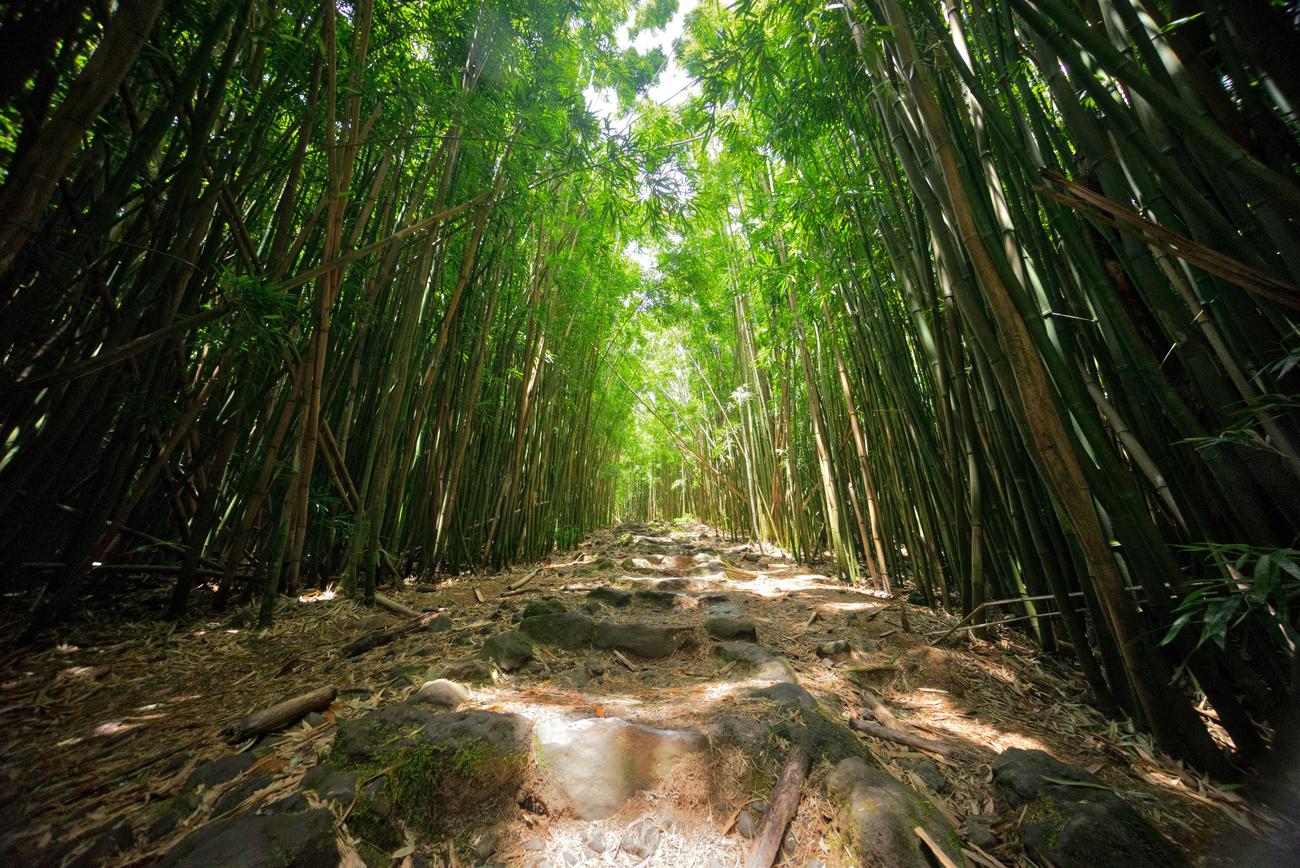
FAQ
Question 1
What makes bamboo the fastest-growing plant in the world?
Answer 1
Bamboo’s incredible growth rate is attributed to its unique cellular structure and efficient nutrient absorption.
Question 2
How long has bamboo been used as an alternative building material?
Answer 2
Bamboo has been used as a sustainable and resilient construction material for centuries, particularly in Asian countries.
Question 3
What are the benefits of using bamboo in construction?
Answer 3
Using bamboo in construction offers various benefits such as high compressive strength, lightweight properties, and earthquake resistance.
Question 4
Is bamboo a renewable resource?
Answer 4
Yes, bamboo is a renewable resource as it can be cultivated and harvested without harming the plant or the environment.
Question 5
What are some modern architectural styles that incorporate bamboo?
Answer 5
Bamboo can be used to create a new architectural look and is commonly incorporated in modern architectural styles for its aesthetic appeal and sustainable qualities.
- Senior at What Age: Benefits & Eligibility Guide - March 29, 2025
- Unlocking Senior Benefits: How Old is a Senior? Your Complete Guide - March 29, 2025
- Master Russian Politeness:A Guide to Saying Please - March 29, 2025
